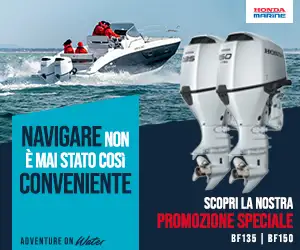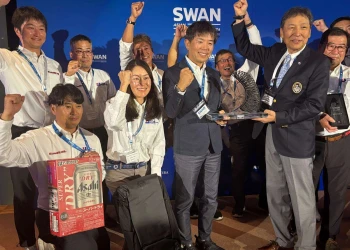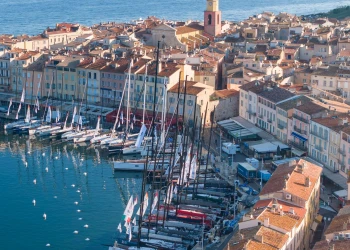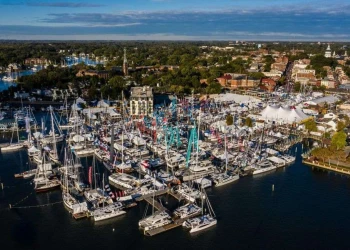
Benny Brannbacka
In conversation with Benny Brannbacka, the evolution of the yard
Benny Brannbacka's history with Nautor starts a long way back. A valued member of the company, he benefits from a great heritage due to the experience gained by his father, uncles and other siblings.
Benny you have been part of this company since 2003 and you belong to the 3rd generation of boatbuilders at Nautor. How did your career in the company start?
I think I started my career at Nautor Swan even before I realized it myself. I was touched and inspired by all the stories of my father, his brothers and cousins and I started feeling enchanted by the Swan world.
Officially, I took my first steps in the company as a summer worker during my engineering school studies. I had the opportunity to work as an electrician as well as participating as delivery crew on several yachts and this gave me an excellent overview on how to build a Swan and the importance of the teamwork between the various departments as well as with the owner and crew.
The summer work period taught me that building a yacht is all about planning in sync with the whole building team, engineering staff as well as quality assurance, just to name a few. I also learned that everyone must be ready to help each other out, also across departments in order to build the yacht to perfection.
I must say that I truly admire my foremen who believed in me and gave me the opportunity to try out several jobs also during the summer work period.
Later I completed my final thesis work at the Technical Office at Nautor and was immediately after offered a job as an electronics designer in the Technical Office.
You have been able to rotate in different departments at Nautor and you know the processes inside out. Can you please explain to us the most important changes in boatbuilding over the years?
My job rotation has helped me to know and understand the different stages and processes of building a Swan, all the way from the more traditional to the most innovative ways of building and construction.
Over the years at Nautor, the evolution in getting the "job done" has been huge. Just think about the development of computer technology in daily working practice - such as in modelling, simulating, milling and nesting. With the help of new technology we can today accurately pre-manufacture furniture, electrical assemblies, mechanical systems and install them efficiently into the yachts as more complete solutions. This helps in saving time while the quality improves and the workers can perform their job in an improved ergonomic environment.
This together with the strong focus on health and safety work will ensure that all workers can safely come home after his/her work shift.
In the production I would say that the most significant development is in the field of composite materials and adhesives. Lamination is today a precision work that requires special attention to detail as well as clean room environment.
Michelangelo Casadei, Nautor Group CTOO, explained to us the touch points of building a Swan today. What are the ones that have remained and what has changed over the years.
Today the touch points haven't changed much as we base our way of building every Swan on our fundamental pillars of Quality, Elegance, Reliability and Performance. What we are focusing on is more about fine tuning and increasing the amount of control during the various steps in developing and building a Swan.
One typical example of this is the production gates that we have implemented in production. The gates ensure that the yacht is not allowed to pass to the next production stage unless checked and OK'd by various departments. This process allows us to rectify possible issues early on and guarantee the success in the later production stages.
Perhaps the biggest changes throughout are due to the rapid development in technology and design. This is very exciting as we have to continuously stay alert and adapt to the requests of the market yet ensuring that the Swan DNA stays intact.
As the Brannbacka family has a long-time experience in building Swans, when you gather with your family, do you discuss the changes happened over the years?
Absolutely, it is unavoidable not to talk about Nautor as it is not just a job, it is a part of our lives. Last week we discussed, for example, that my father, due to a shortage of staff in production, was in our garage at home, welding the inox window frames for the Ron Holland designed Swan 100 Garuda. My father is by no mean a welder, however, with the right amount of curiosity and "can-do" attitude, everything is possible, also in this case.
Perhaps the main thing that always is stressed when we discuss Swan, or work in general, is the attention to detail. It does not matter if it is building a yacht, cutting your lawn, cooking food, you must always do it to the last detail. You should do it to the level of quality that you never have to feel embarrassed of something you made.
The experience of the boatbuilders at Nautor is one of the strongest values of the brand. How do young and old generations cooperate? How does the age gap affect their way of working?
This is a very good question. I firmly believe that it is not the age that determines the success of collaboration between the generations. Clearly, the younger generations can have different values and approach for doing things compared to the older generations, however, the best example of proving my point is our longest employee at Nautor Mats Snellman.
Mats has been at Nautor for more than 50 years and we could not ask for a better teacher and mentor in the team. His attitude is to always listen, give an extra hand or instruction, but more so to deliver the help in a way that the receiver feels proud to learn, not to feel disappointed that he could not perform the task. Add a smile to that and the age difference does not exist!





